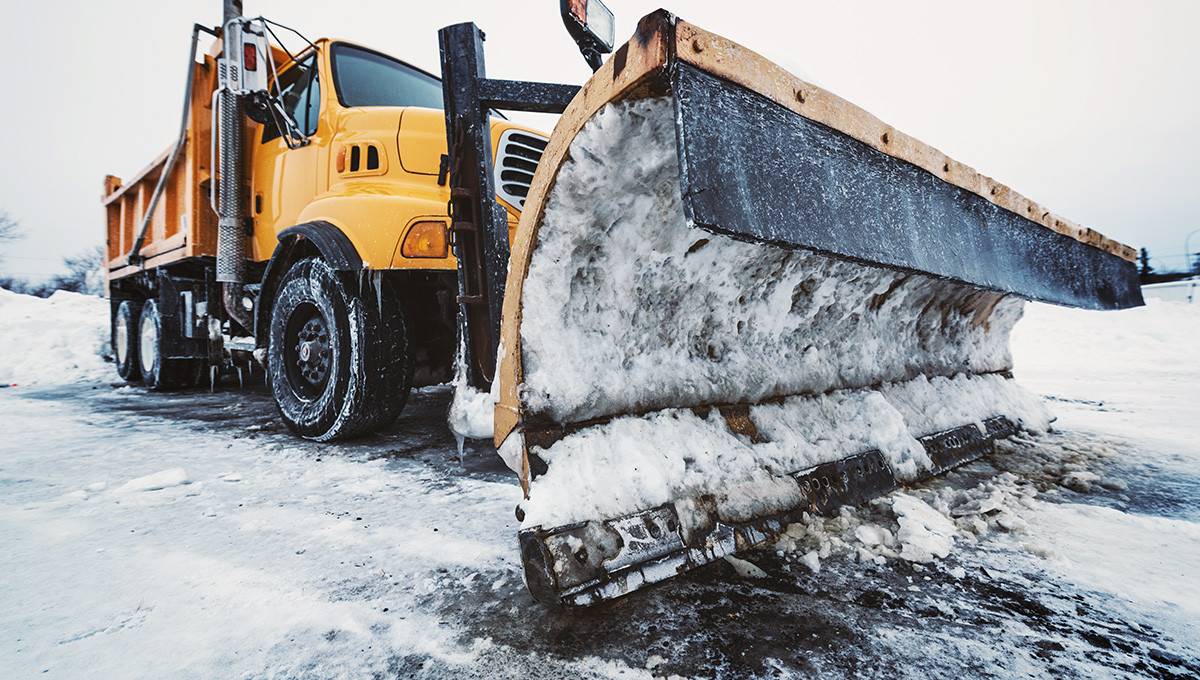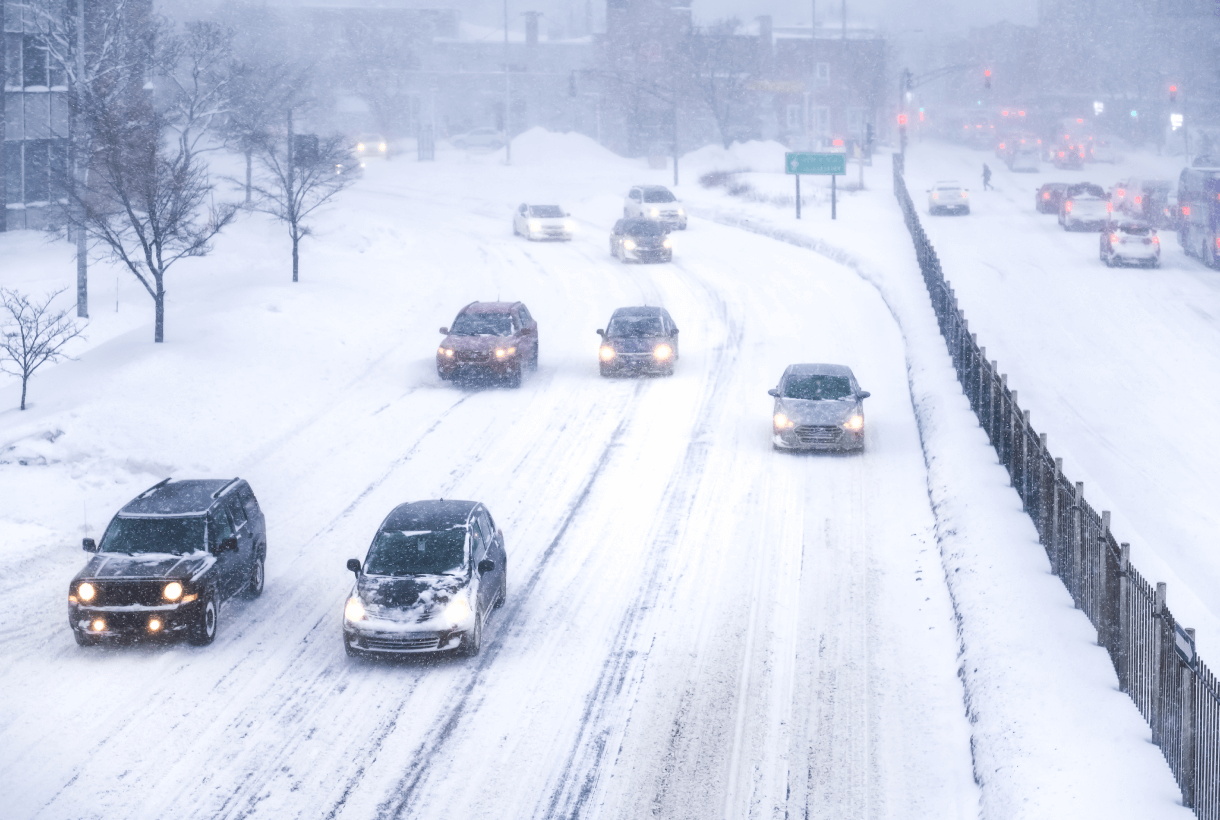Extreme weather is on the rise—winter storms and blizzards, for example, were up 216 percent in the U.S. from 2021 to 2022*. And it’s clear that risk is becoming more dynamic, meaning a winter storm can easily cause flooding, power outages, supply chain disruptions and other, often unpredictable, consequences.
Large organizations, such as universities and federal agencies, and state and local governments are charged with protecting people in the face of extreme winter weather events. Corporations also must be ready to sustain operations through whatever winter holds in store. And that means preparing to battle the elements armed with a comprehensive emergency strategy.
Protecting People
When winter disasters strike, safeguarding people is top priority. Preparation is key. A blizzard on a major national highway, for example, can halt traffic, stranding drivers in freezing temperatures for many hours. Travelers would be unable to reach their destinations, putting many at risk of hypothermia and medical emergencies as they run out of fuel and rescue teams are unable to reach them.
Here are a few essential preparations that can help keep people safe:
- Prioritize emergency kits: Large organizations should encourage employees to assemble emergency kits for the office with enough supplies to shelter for three days. (See this checklist assembled by FEMA.) Businesses must provide delivery personnel with kits in case they become stranded, and emergency managers should recommend that residents stock kits for their cars and homes.
- Conduct evacuation and sheltering drills: Ensure you have documented plans to inform people when and where to seek shelter—and be ready to launch evacuation plans at any time. But a plan is only as good as its execution, so run test drills to identify and fix any weaknesses.
- Encourage remote work: Organizations should create plans for people who can perform their duties remotely. Strive to provide a remote experience that reflects the onsite work environment by supplying employees with the same applications and collaboration tools. Before the season, test the remote environment with employees who aren’t used to working at home and check the speed and security of their internet connections. A seamless remote experience leads to fewer employees risking their lives to battle snowstorms and icy conditions to head into work.
- Ready communication strategies: First, be ready to issue timely alerts about impending winter disasters and disturbances. Second, build a crisis communications plan to update everyone on the latest storms and their effects, such as road closures, downed power lines, flooding and traffic accidents.
Prepare for Winter Weather with A Simulation Exercise
Watch an example of an engaging and impactful tabletop exercise, and boost your preparedness for winter weather.
Readying Snow Removal Equipment and Supplies
To ensure field teams can stand up to winter weather, outfit them with well-maintained tools of the trade. Gather, inspect and prepare supplies like shovels, ice choppers, salt and sand and ready your:
- Snow removal equipment: At every organization and agency, tune up snowblowers, tractors and plow trucks and make this equipment easily accessible when a storm strikes. Repair damaged parts, check filters and fuel and oil levels and verify that engines start and run properly.
- Vehicles: Large organizations often contract companies to remove snow and ice. Examine contractors’ preparedness plans and review their performance from previous seasons. For organizations that handle their own snow removal, ensure vehicles are equipped with snow tires, which provide up to 50 percent more traction in winter than all-season radials, as well as chains in higher elevations and where required by law.
- Fleets: For businesses that own delivery trucks, give every vehicle a thorough checkup before the season to safeguard drivers when conditions deteriorate. Additionally, document a regular maintenance schedule and stick to it. More organizations are outfitting vehicles and essential equipment with GPS-enabled sensors; this enables corporate teams and emergency managers to track their movements, warn road crews of threats and reroute drivers to safer roadways or shelter.
Preparing Facilities for Winter’s Worst
Whether an organization leases or owns buildings, it must develop a comprehensive picture of every site. Identify buildings that make reliable shelters, locations of emergency exits and optimal evacuation routes. Create a maintenance plan for every building that includes shoveling rooftops to prevent collapses and clearing snow and ice from all walkways, ramps, garages and shipping and receiving docks to prevent falls. Emergency managers should do the same for their offices and encourage community residents to prepare their households accordingly. Additionally, inspect, test and tune up all critical building systems, especially HVAC, as well as those for communications, security, fire suppression and power redundancy.
Keep close tabs on power outages, which can knock out heating systems. As part of your winter weather planning, install generators outdoors and away from windows to protect occupants from fires and carbon monoxide poisoning.
Taking Advantage of AI-Powered Technology
With so many potential issues to consider, preparing for winter weather disasters can seem intimidating. But with today’s data-driven approach to crisis management, getting ready to tackle critical winter weather events has become far less overwhelming and much more effective.
AI-powered, real-time risk intelligence reports on current conditions and how they change from one moment to the next. Armed with this knowledge, those on the team charged with managing incidents can adjust their plans on the fly to address any unanticipated dangers caused by storms as they change direction or grow in intensity.
Emergency professionals can identify relevant threats to people, places and property, quickly send mass notifications to keep everyone informed and overcome weather-related disruptions via proactive planning. Features like custom event filtering and detailed situation reports take the hassle out of getting all your people read-in, even when the lights go out. With advanced warning and the ability to inform everyone with just a few clicks, you can keep all your people and your operations out of harm’s way.
Before winter arrives, management typically develops an employee communication strategy and contingency plans as part of its overarching winter weather response plan for improved employee safety. A best practice in preparing crisis communications is to script alert templates for multiple disaster scenarios and load them into a mass notification system, an integral component of today’s critical event management platforms.
Drawing from real-time weather and logistics intelligence, teams can then modify these templates quickly to target alerts about abrupt weather changes to their stakeholders. They can also geo-target additional members who suddenly find themselves in a storm’s path but may not have been on the original distribution list.
No matter where your people and operations are located (or in what kind of weather), you can quickly detect threats and alert your people, from anywhere, any time. Business continuity and operational resilience are year-round endeavors but require proactive planning for the snow, ice and freezing temperatures winter may bring. When cold weather’s on the way, modern and innovative crisis management technology can insulate your operations from winter disruptions.
Learn more about winter readiness by watching our on-demand webinar about the importance of conducting exercises: Prepare for Winter Weather with A Simulation Exercise.
*According to the 2023 OnSolve Global Risk Impact Report


